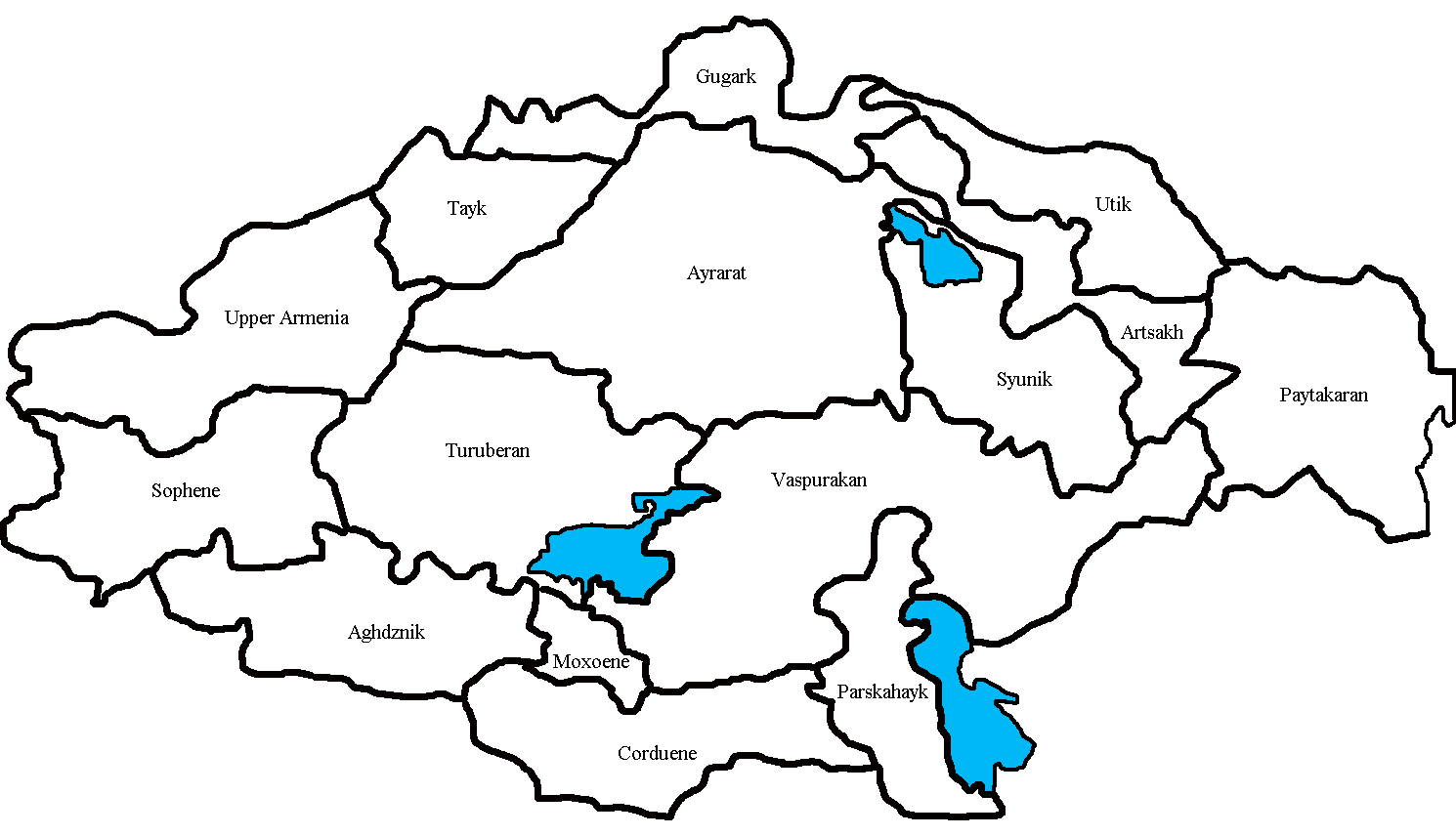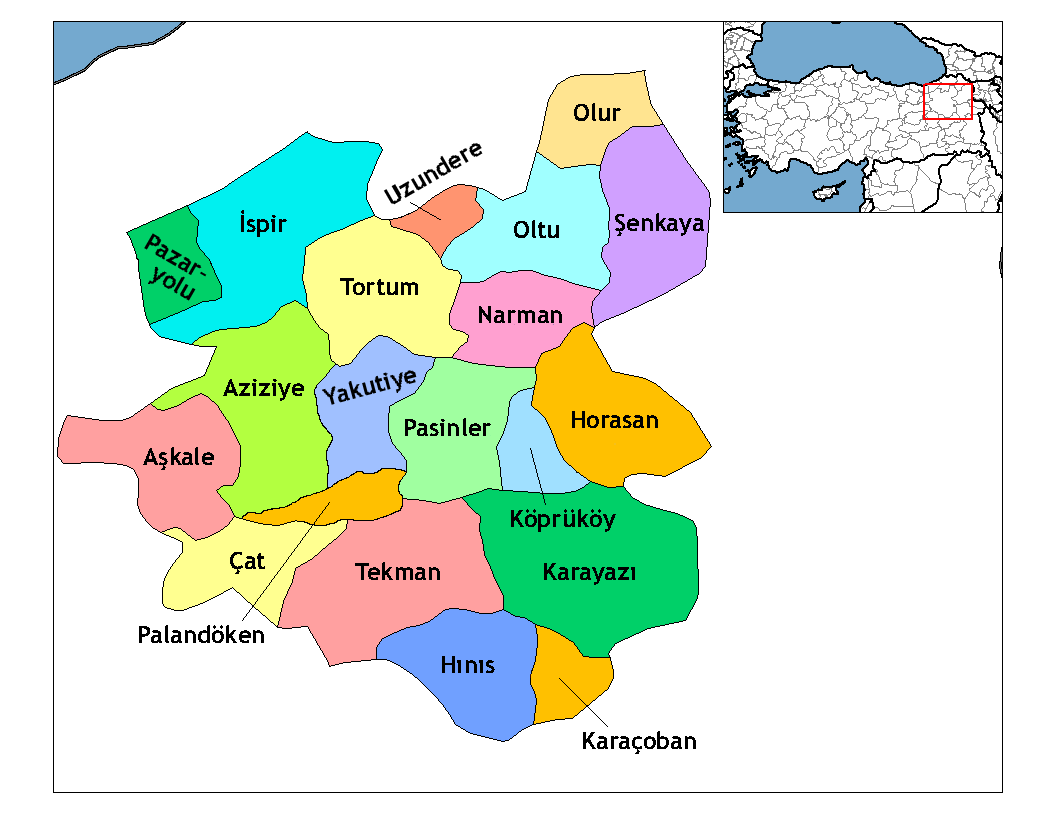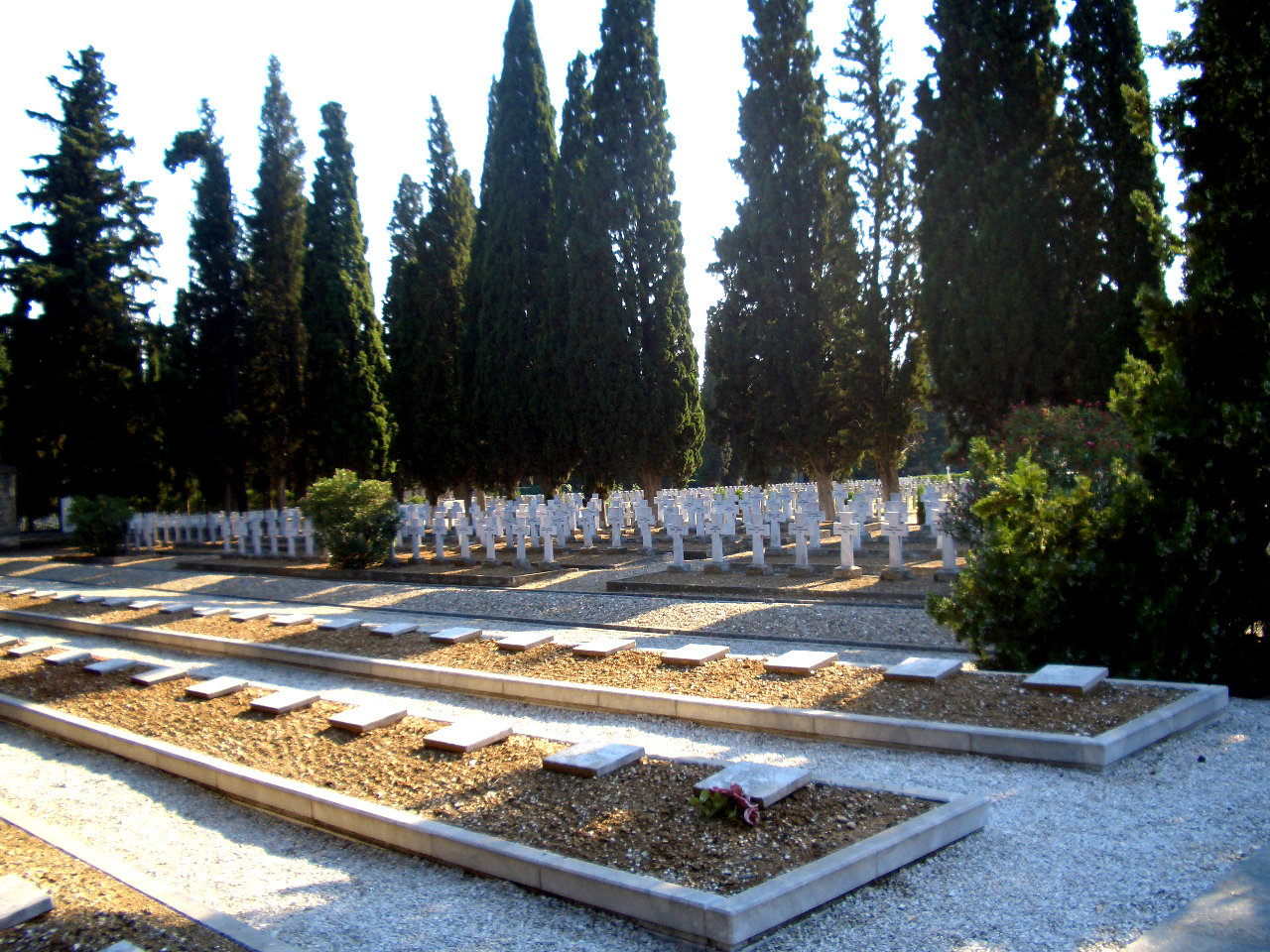|
Oltu
Oltu (; ) is a town and district of Erzurum Province in the Eastern Anatolia region of Turkey. The mayor is Necmettin Taşçı, from the AKP. The population was 31,087 in 2020. History An inscription found in Oltu’s castle has been dated to the 7th century A.D.(see below), but the settlement is known to have been established much earlier. Hakobyan, Tadevos Kh. ''«Օլթի»'' (Olti). Armenian Soviet Encyclopedia. vol. xi. Yerevan: Armenian Academy of Sciences, 1986, pp. 527-528. The city-fortress had once belonged to the Mamikonian ''nakharars'' and later passed into the hands of the Bagratunis. Administratively, it was found within the borders of the region of Vok'aghe in the province of Tayk. The first mention of Oltu as a fortified settlement is in the 9th century when the Georgian Bagratids occupied this region. After the death of the Iberian Kuropalates David in 1000, the troops of Emperor Basil II occupied the castles and towns in the region of Tao-Tayk‛, which includ ... [...More Info...] [...Related Items...] OR: [Wikipedia] [Google] [Baidu] |
Olti Okrug
The Olti Okrug was a district (''okrug'') of the Kars Oblast of the Russian Empire existing between 1878 and 1918. Its capital was the town of Olty (present-day Oltu), presently part of the Erzurum Province of Turkey. The ''okrug'' bordered with the Kars Okrug to the southeast, the Ardahan Okrug to the northwest, the Kagizman Okrug to its south, the Batum Oblast to the north, and the Erzurum Vilayet of the Ottoman Empire to the west. History The Olti Okrug was one of the four territorial administrative subunits (counties) of the Kars Oblast created after its annexation into the Russian Empire in 1878 through the Treaty of San Stefano, following the defeat of the Ottoman Empire. During the First World War, the Kars Oblast became the site of intense battles between the Russian Caucasus Army supplemented by Armenian volunteers and the Ottoman Third Army, the latter of whom was successful in briefly occupying Ardahan on 25 December 1914 before they were dislodged in early Ja ... [...More Info...] [...Related Items...] OR: [Wikipedia] [Google] [Baidu] |
Turkish–Armenian War
The Turkish–Armenian war ( hy, Հայ-թուրքական պատերազմ), known in Turkey as the Eastern Front ( tr, Doğu Cephesi) of the Turkish War of Independence, was a conflict between the First Republic of Armenia and the Turkish National Movement following the collapse of the Treaty of Sèvres in 1920. After the provisional government of Ahmet Tevfik Pasha failed to win support for ratification of the treaty, remnants of the Ottoman Army’s XV Corps under the command of Kâzım Karabekir attacked Armenian forces controlling the area surrounding Kars, eventually recapturing most of the territory in the South Caucasus that had been part of the Ottoman Empire prior to the Russo-Turkish War (1877–1878) and was subsequently ceded by Soviet Russia as part of the Treaty of Brest-Litovsk. Karabekir had orders from the Ankara Government to "eliminate Armenia physically and politically". One estimate places the number of Armenians massacred by the Turkish army durin ... [...More Info...] [...Related Items...] OR: [Wikipedia] [Google] [Baidu] |
Tayk
Tayk ( hy, Տայք, Taykʿ) was a historical province of the Kingdom of Armenia, one of its 15 (worlds). Tayk consisted of 8 cantons: * Kogh * Berdats por * Partizats por * Tchakatk * Bokha * Vokaghe * Azordats por * Arsiats por There was a proto-Armenian confederation, Hayasa-Azzi, in this area in the 2nd millennium BC. It was probably the same as (and with a name likely related etymologically to) the Daiaeni and Diauehi of Assyrian and Urartian sources. From the 2nd century BC to the 9th century AD Tayk was a part of Armenian kingdoms or "autonomies": Greater Armenia, Marzpan Armenia and Bagratid Armenia. According to Strabo, the area around Tayk was originally Iberian, but during the time of Artaxias I it was conquered by Armenia. In the 999 A.D., Tayk or Tao became part of the Georgian Bagratid principality of Tayk-Kharjk or Tao-Klarjeti. The Tayk province covered the contemporary Turkish districts of Yusufeli (Kiskim) in Artvin Province and Oltu, Olur (Tavus ... [...More Info...] [...Related Items...] OR: [Wikipedia] [Google] [Baidu] |
First Republic Of Armenia
The First Republic of Armenia, officially known at the time of its existence as the Republic of Armenia ( hy, Հայաստանի Հանրապետութիւն), was the first modern Armenian state since the loss of Armenian statehood in the Middle Ages. The republic was established in the Armenian-populated territories of the disintegrated Russian Empire, known as Eastern Armenia or Russian Armenia. The leaders of the government came mostly from the Armenian Revolutionary Federation (ARF or Dashnaktsutyun). The First Republic of Armenia bordered the Democratic Republic of Georgia to the north, the Ottoman Empire to the west, Persia to the south, and the Azerbaijan Democratic Republic to the east. It had a total land area of roughly 70,000 km2, and a population of 1.3 million. The Armenian National Council declared the independence of Armenia on 28 May 1918. From its very onset, Armenia was plagued with a variety of domestic and foreign issues. A humanitarian crisis eme ... [...More Info...] [...Related Items...] OR: [Wikipedia] [Google] [Baidu] |
Treaty Of Kars
The Treaty of Kars ( tr, Kars Antlaşması, rus, Карсский договор, Karskii dogovor, ka, ყარსის ხელშეკრულება, hy, Կարսի պայմանագիր, az, Qars müqaviləsi) was a treaty that established the borders between Turkey and the three Transcaucasian republics of the Soviet Union, which are now the independent republics of Armenia, Georgia and Azerbaijan. The treaty was signed in the city of Kars on 13 October 1921. Signatories of the Treaty of Kars included representatives from the Grand National Assembly of Turkey, which would declare the Republic of Turkey in 1923, and from the Armenian, Azerbaijani and Georgian Socialist Soviet Republics with the participation of the Russian Soviet Federative Socialist Republic. The last four parties would become constituent parts of the Soviet Union after the victory of the Bolsheviks in the Russian Civil War and the December 1922 Union Treaty. The treaty was the successor treat ... [...More Info...] [...Related Items...] OR: [Wikipedia] [Google] [Baidu] |
Russo-Turkish War (1877–1878)
The Russo-Turkish War of 1877–1878 ( tr, 93 Harbi, lit=War of ’93, named for the year 1293 in the Islamic calendar; russian: Русско-турецкая война, Russko-turetskaya voyna, "Russian–Turkish war") was a conflict between the Ottoman Empire and a coalition led by the Russian Empire, and including Bulgaria, Romania, Serbia, and Montenegro. Fought in the Balkans and in the Caucasus, it originated in emerging 19th century Balkan nationalism. Additional factors included the Russian goals of recovering territorial losses endured during the Crimean War of 1853–56, re-establishing itself in the Black Sea and supporting the political movement attempting to free Balkan nations from the Ottoman Empire. The Russian-led coalition won the war, pushing the Ottomans back all the way to the gates of Constantinople, leading to the intervention of the western European great powers. As a result, Russia succeeded in claiming provinces in the Caucasus, namely Kars and Batum, ... [...More Info...] [...Related Items...] OR: [Wikipedia] [Google] [Baidu] |
Erzurum Province
Erzurum Province ( tr, Erzurum ili) is a province of Turkey in the Eastern Anatolia Region of the country. The capital of the province is the city of Erzurum. It is bordered by the provinces of Kars and Ağrı to the east, Muş and Bingöl to the south, Erzincan and Bayburt to the west, Rize and Artvin to the north and Ardahan to the northeast. Okay Memiş was appointed as the governor of the province by a presidential decree on 27 October 2018. The province has an overall Turkish-majority. Geography The surface area of the province of Erzurum is the fourth biggest in Turkey. The majority of the province is elevated. Most plateaus are about above sea level, and the mountainous regions beyond the plateaus are and higher. Depression plains are located between the mountains and plateaus. The southern mountain ranges include the Palandöken Mountains (highest peak Büyük Ejder high) and the Şahveled Mountains (highest peak Çakmak Mountain high). The northern mountain ranges a ... [...More Info...] [...Related Items...] OR: [Wikipedia] [Google] [Baidu] |
Kars Oblast
The Kars Oblast was a province (''oblast'') of the Caucasus Viceroyalty of the Russian Empire between 1878 and 1917. Its capital was the city of Kars, presently in Turkey. The ''oblast'' bordered the Ottoman Empire to the west, the Batum Oblast (in 1883–1903 part of the Kutaisi Governorate) to the north, the Tiflis Governorate to the northeast, and the Erivan Governorate to the east. The Kars Oblast included parts of the contemporary provinces of Kars, Ardahan, and Erzurum Province of Turkey, and the Amasia Community of the Shirak Province of Armenia. History The Kars Oblast was a province established after the region's annexation into the Russian Empire through the Treaty of San Stefano in 1878, following the defeat of the Ottoman Empire and the dissolution of the latter's Kars, Childir and Erzurum ''eyalets''.Карсская о ... [...More Info...] [...Related Items...] OR: [Wikipedia] [Google] [Baidu] |
Turkish War Of Independence
The Turkish War of Independence "War of Liberation", also known figuratively as ''İstiklâl Harbi'' "Independence War" or ''Millî Mücadele'' "National Struggle" (19 May 1919 – 24 July 1923) was a series of military campaigns waged by the Turkish National Movement after parts of the Ottoman Empire were occupied and partitioned following its defeat in World War I. These campaigns were directed against Greece in the west, Armenia in the east, France in the south, loyalists and separatists in various cities, and British and Ottoman troops around Constantinople (İstanbul). The ethnic demographics of the modern Turkish Republic were significantly impacted by the earlier Armenian genocide and the deportations of Greek-speaking, Orthodox Christian Rum people. The Turkish nationalist movement carried out massacres and deportations to eliminate native Christian populations—a continuation of the Armenian genocide and other ethnic cleansing operations during World Wa ... [...More Info...] [...Related Items...] OR: [Wikipedia] [Google] [Baidu] |
Penek, Şenkaya
Penek is a neighbourhood in the Şenkaya District of Erzurum Province Erzurum Province ( tr, Erzurum ili) is a province of Turkey in the Eastern Anatolia Region of the country. The capital of the province is the city of Erzurum. It is bordered by the provinces of Kars and Ağrı to the east, Muş and Bingöl to the ... in Turkey. References Villages in Şenkaya District {{Şenkaya-geo-stub ... [...More Info...] [...Related Items...] OR: [Wikipedia] [Google] [Baidu] |
George Milne, 1st Baron Milne
Field Marshal George Francis Milne, 1st Baron Milne, (5 November 1866 – 23 March 1948) was a senior British Army officer who served as Chief of the Imperial General Staff (CIGS) from 1926 to 1933. He served in the Second Boer War and during the First World War he served briefly on the Western Front but spent most of the war commanding the British forces on the Macedonian front. As CIGS he generally promoted the mechanization of British land forces although limited practical progress was made during his term in office. Army career Born the son of George Milne and Williamina Milne (née Panton) and educated at MacMillan's School in Aberdeen and the Royal Military Academy, Woolwich, Milne was commissioned into the Royal Artillery on 16 September 1885. He was initially posted to a battery at Trimulgherry in India and then joined a battery at Aldershot in 1889 before being posted back to India to a battery at Meerut in 1891.Heathcote, Anthony pg 208 Promoted to captain on 4 July 189 ... [...More Info...] [...Related Items...] OR: [Wikipedia] [Google] [Baidu] |





.jpg)
